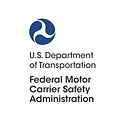Speeding and work zones are a deadly combination that is increasingly putting large truck and bus operators in danger. Consider these facts: In 2020, the latest year data is available, more than a quarter (27%) of fatal work zone crashes involved a commercial motor vehicle (CMV). Furthermore, speed was a contributing factor in 37% of fatal work zone crashes that year — a 16% increase over 2019. And since 2020, traffic fatalities have spiked nationwide, with speed as a top crash factor. This data emphasizes the need for all drivers — including those who operate CMVs — to be extremely careful while driving through work zones by reducing speed, following signs, and being mindful of the vehicles around you.
With new funding under the Bipartisan Infrastructure Law, a plethora of road, bridge, and other infrastructure improvements nationwide will create a huge increase of work zones across the United States. This ramp-up in construction activities, combined with the increasing traffic fatalities and speeding trends on our nation’s roadways, makes it more important than ever to exercise caution in work zones to prevent crashes and save lives. The U.S Department of Transportation (USDOT) is committed to significantly reducing serious injuries and deaths on America’s highways, roads, and streets, and has developed the comprehensive National Roadway Safety Strategy (NRSS) to work toward reaching zero roadway fatalities.
How can CMV drivers help achieve that goal, and stay safe in work zones?
- Check your speed. Obey posted work zone speed limits and look out for stopped or slow traffic to reduce the risk of crashes with other vehicles and highway workers.
- Stay alert. Avoid distractions like phones and food or drink. Pay close attention to road workers and flaggers — give them extra room, always slow when approaching them, and be prepared to stop if necessary.
- Be mindful of other vehicles. The passenger vehicle drivers around you may not be aware of CMV driving challenges, including large blind spots and longer stopping distances. Drive defensively.
- Merge early. When approaching lane closures, move into the open lane as soon as possible — pay close attention to vehicles around you that could be in your blind spot.
- Maintain extra distance. Keep back from the vehicle in front of you to allow for braking time and mitigate potential effects from rear-end crashes, which are common in work zones.
Finally, you can share resources from USDOT’s Federal Motor Carrier Safety Association (FMCSA). We can all help educate roadway users about the importance of reducing speeding and improving safety in work zones. Download materials from FMCSA’s Our Roads, Our Safety work zone safety webpage and follow the Our Roads, Our Safety Facebook page throughout the week for easy-to-share tips and posts.
